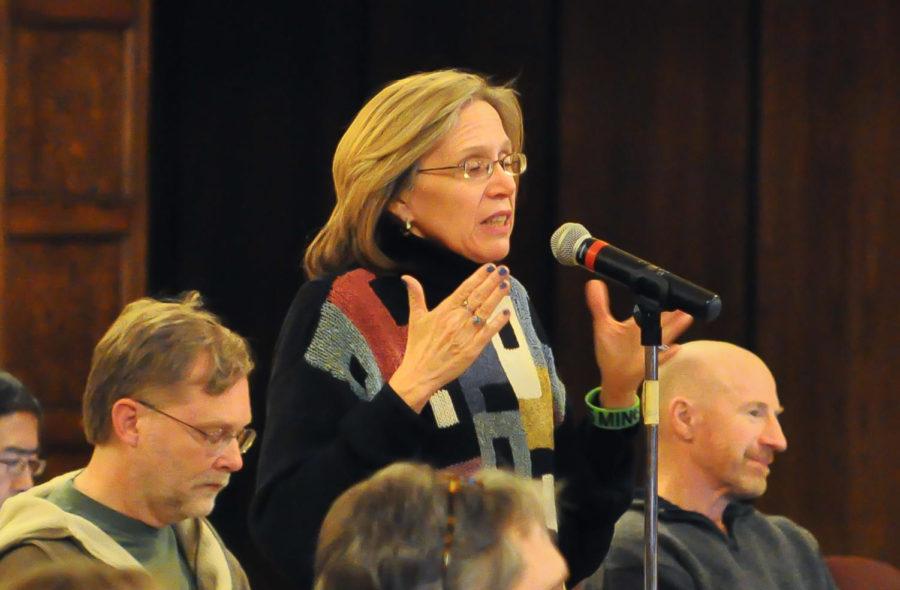Madden addresses ISU Alert concerns to Faculty Senate
Associate professor from department of kinesiology, Ann Smiley-Oyen gave her opinion on adding gates for the one-way route for safety due to increase of traffic on campus during the Faculty Senate meeting on Nov. 12 in the Great Hall of the Memorial Union.
December 11, 2013
Warren Madden, senior vice president for Business and Finance, addressed concerns and questions from the Faculty Senate regarding the use of the ISU Alert System in the incident that occurred on campus on Nov. 4.
Madden said currently the university is still gathering information to determine if messages delivered through the alert system could have been delivered more quickly.
He said changes in Google software were part of the reason the system did not work as well as it should have, causing some emails to go into spam files.
“The alert system had been tested in October, and it worked as it should have,” Madden said.
Madden also said IT resources has been asked to explore systems to see if there are any others that may work better.
Concerns were addressed by Madden about police officers continuing the pursuit onto campus. He said we will never know if the driver of the vehicle would have stopped had officers backed off. He also said they will review if there should or should not be a policy of no pursuit with Ames and Story County Police officers onto campus.
“We have city-university activities that are connected and so both our officers and the city police officers cross those jurisdictional boundaries,” Madden said. “And should there be a different set of policies is one of the things we’re looking at. But, practically speaking, it’s very difficult to just have a barrier.”
Madden addressed questions about the use of the system if there would be an active shooter on campus. He said in that instance, a siren system on campus can deliver voice messages. Madden did note, however, that it cannot be heard in all buildings on campus.
“One of the questions is, do we invest resources in wiring all of our buildings to have some kind of … audio audible system that can communicate,” Madden said.
Jonathan Sturm, representing the College of Liberal Arts and Sciences, asked if there could have been a more general message sent out.
“Does the written medium of the Internet and emails and so forth make it unwieldy or difficult for legal reasons to avoid having some sort of a generic template that is imprecise as to the specifics but precise enough as to instructions?” Sturm said.
Madden said there is a list of pre-programmed statements that can also be used.
“The voice system where you’re sending … a voice message takes the longest to get distributed through 38,000 names,” Madden said. “The email system is actually the most rapid method of getting a message out.”
Madden said at this point, it appears the proper procedures were followed during the incident.
Madden said the goal is to pull information together and put it into a draft that will then be distributed to major constituent groups such as Faculty Senate, Professional and Scientific Council and the Government of the Student Body.

















